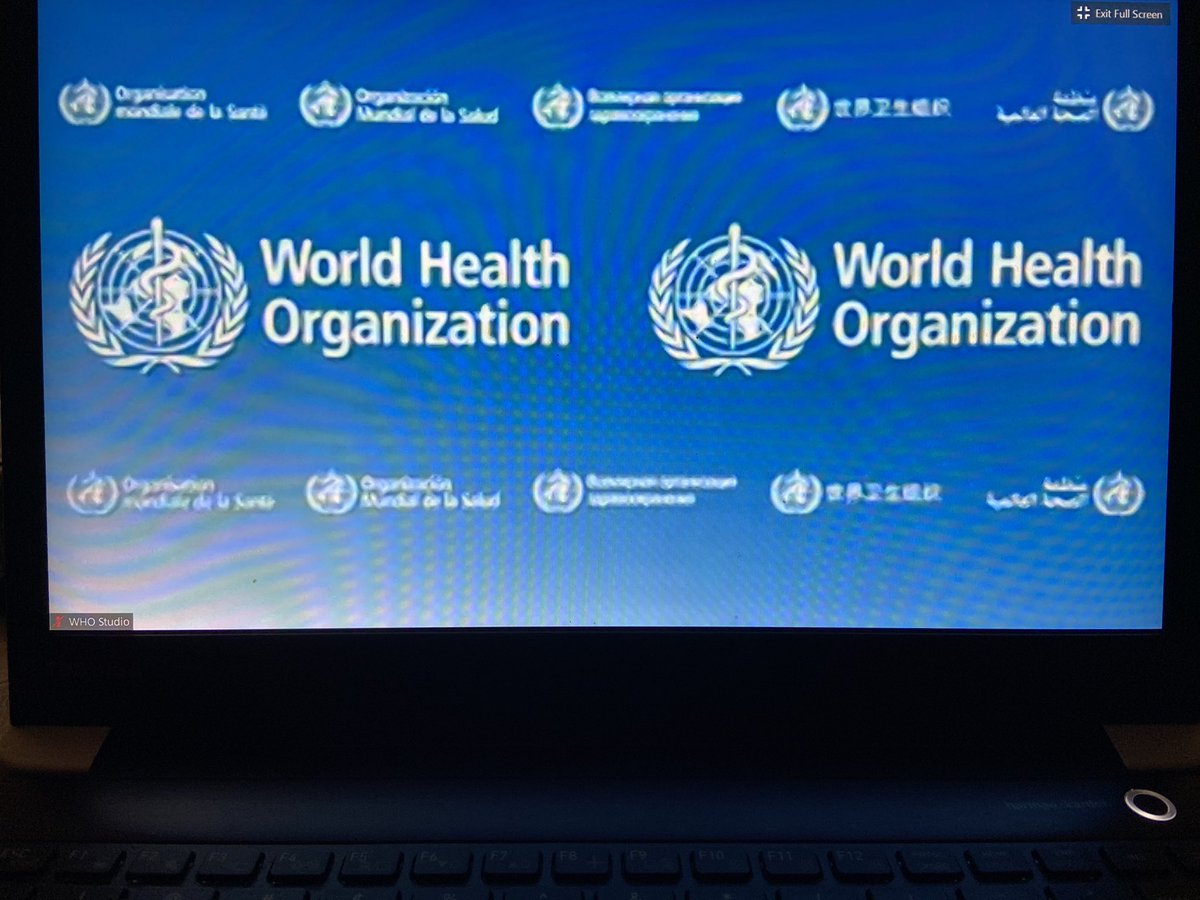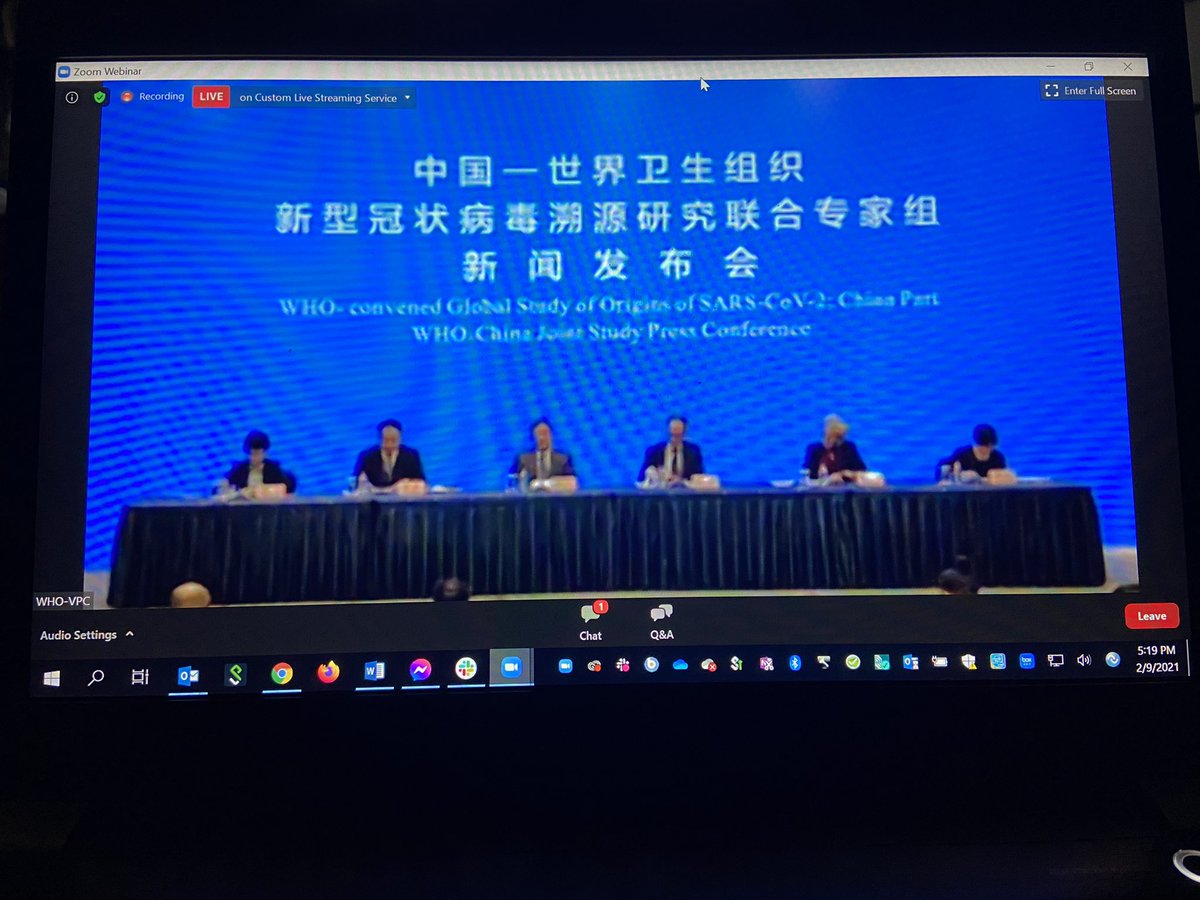About to start. @WHO presser with the international #COVID fact-finding team of experts in Wuhan. The consistent narrative has been to not expect any breakthroughs and it could - and likely will based on history - take years to find the origin of coronavirus. @CBSNews is here. 

Here we go finally. 80 minutes late after the announced start time of 4pm. No reason given. @WHO
Ok after sitting through that 3-hour @WHO Wuhan presser and filing my @CBSNews article, here are my takeaways (and so you don't have to lose 3 hours!). First: no surprise, no breakthrough in the hunt for COVID-19's origin. But in a nutshell, here we go... 

"A lab-related accident was extremely unlikely," says @WHO expert @Peterfoodsafety. Think famous/infamous Wuhan Institute of Virology depending on your bias/politics. Skeptics and China bashers say COVID was man-made and/or leaked from WIV. Massive consensus refutes this.
"Accidents do happen,” admitted @Peterfoodsafety when challenged on why a lab link was ruled out. But "no reports of this virus or one closely linked are being worked in any other lab in the world." It was "very unlikely anything could escape” from the maximum biosecurity WIV.
Current evidence “continues to point to a natural reservoir" for COVID-19, adds @Peterfoodsafety. There are four hypotheses. Being a biology and environmental science major myself from years ago, I'm going to relish going into these in the next four hypotheses... 

1: “Most likely pathway” is COVID spread to humans through an intermediary species that lives close to human populations. Don't think bats - but bats *mingling* with another species that humans then *mingle* with more. "Will require more targeted research," says @Peterfoodsafety
2: Less likely but “still possible” is the idea the coronavirus jumped directly from a primary source animal to humans: there is strong belief COVID-19 originally came from bats but those flying mammals aren't easily found in Wuhan as they are in Yunnan - yes origin of SARS 2003.
3: The third hypothesis is food chain transmission, with the virus originating from someplace outside of Wuhan or even China the @WHO posits, riding on the surfaces of cold-chain packaging from other regions or other countries.
4: Rounding out the four even though I touched on it above: the least likely is a lab-related incident and @Peterfoodsafety says it “is not a hypothesis that would imply future study into the origin of the virus.”
I appreciated @Peterfoodsafety's candor when he said this: “From the early days of December 2019, did we change dramatically the picture we had beforehand? I don’t think so. Did we improve our understanding? Did we add details to that story? Absolutely.” Some real talk.
I also appreciated @MarionKoopmans saying the @WHO team is open to new evidence. As every scientist should be of course. “Whenever new information becomes available, we can... say okay with this new information does our assessment of these different entry pathways change.”
Also @MarionKoopmans said that new information “could be anytime because there are ongoing studies in different parts of the world.” So keep an eye out for those.
Ok what's next? "We should really go and search for evidence for earlier circulation” *before* Wuhan, said @Peterfoodsafety. This means looking at research around the world that claimed to find cases before Wuhan - and seeing if those lead to new clues. @CBSNews is here.
I'll repeat this: could be a LONG time before we know COVID's origin. @PeterDaszak told me at least 2 years. Dr. Wang Linfa in Singapore (found SARS 2003 source) told me could be >40 years like Ebola! And still hasn't been found! Take care, stay safe everyone! @CBSNews is here.

 Read on Twitter
Read on Twitter



